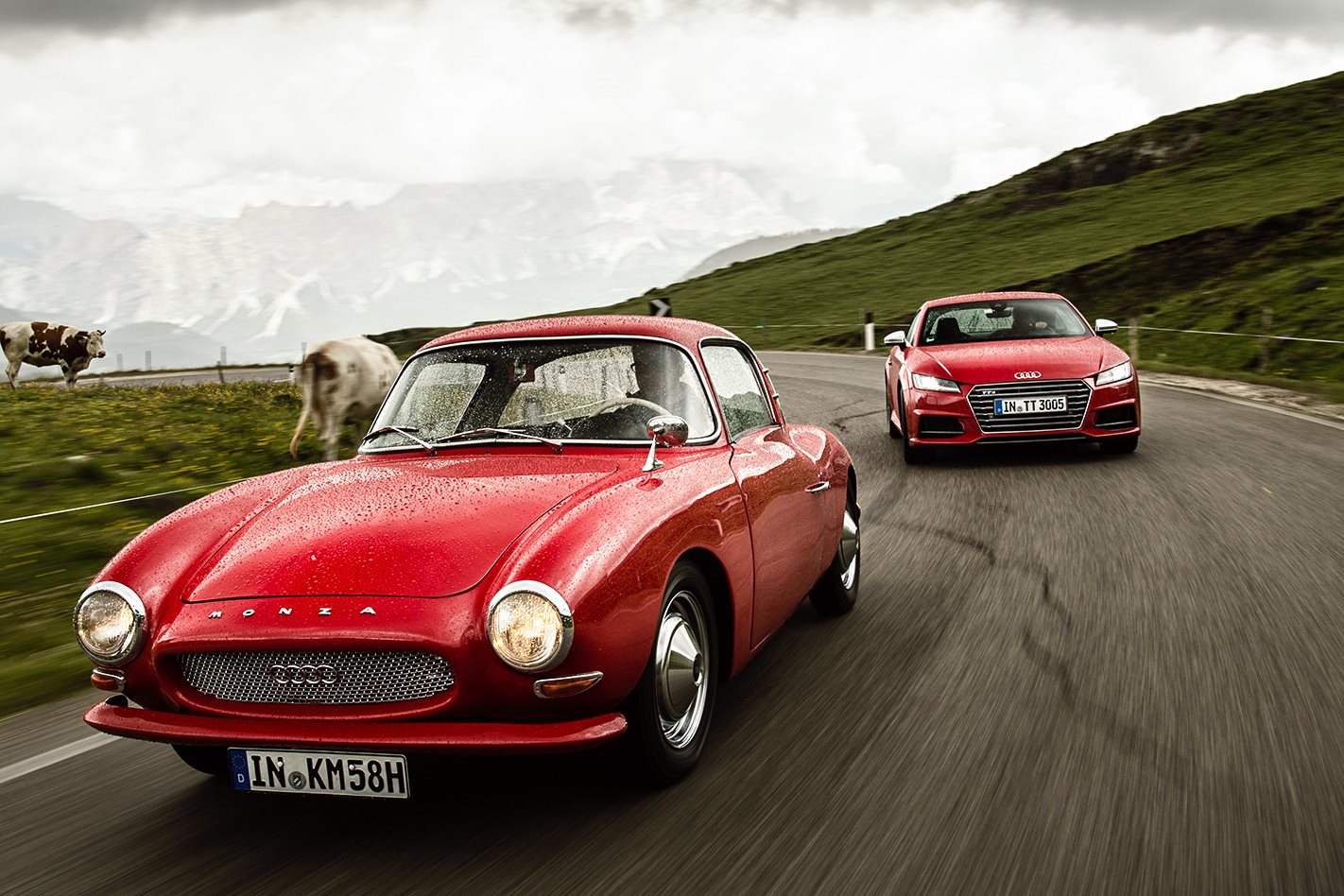The genetic link between these cars, the diminutive DKW Monza Coupe and Audi’s Mk III TT, was established 58 years ago.
By the time the Monza broke cover in 1956, Auto Union, which encompassed DKW, Horch and Wanderer, had ceased to exist, with DKW, which incorporated Audi, the sole survivor. Two years later Mercedes-Benz acquired a majority stake in DKW before Volkswagen absorbed 50 per cent of the company in 1964, increasing that to 100 per cent within 18 months.
History’s not their most obvious commonality, though. Both cars were developed in Ingolstadt, and created as lightweight, efficient and compact coupes. Which is as good a reason as any to take both for an epic drive through the spectacular Dolomites in Northern Italy to see if we can trace the lineage.
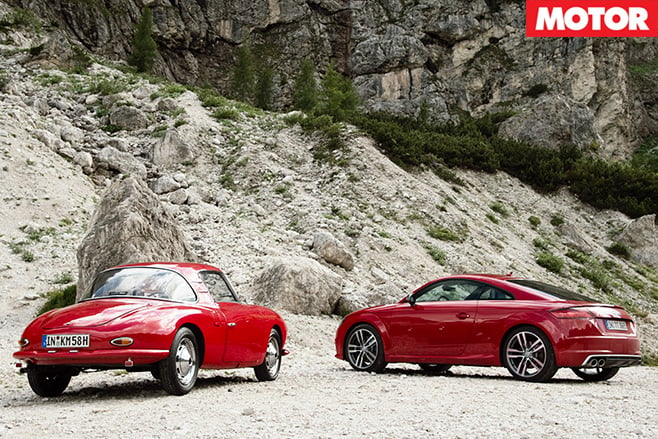
In contrast to the Monza’s limited success, the TT is almost an automotive icon. This third-generation, penned by Wolfgang Egger, arrives as a highly evolutionary shape and looks suspiciously familiar to its forebears from certain angles. The new TT may sit on VAG’s latest MQB architecture, but the silhouette and proportions have barely changed at all.
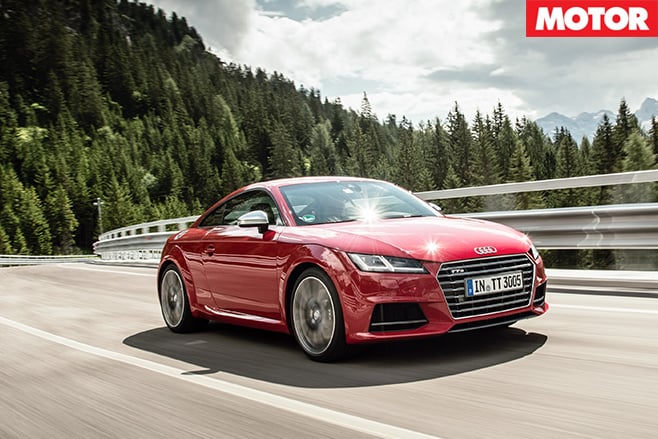
Our particular TTS is equipped with the S-tronic six-speed dual-clutch transmission and top-shelf 20s. Thanks to its highly-tuned 228kW/380Nm 2.0-litre turbo four, 0-100km/h takes just 4.7sec, matching the outgoing TT RS. At the same time its average fuel consumption (on standard-size tyres) has dropped from 7.9 to 7.1L/100km, though our spirited driving resulted in 12.2L/100km.
The improvements continue on the inside. The cargo bay swallows 305 litres, which increases to a shooting-brake-like 712 litres if you ditch the rear seats, which are next to useless anyway.
From the driver’s seat, the 2015 Audi TTS displays an exceptional level of fit and finish, and marks a significant advance in ergonomics. The eye-catcher is the new large TFT screen, which replaces the conventional instrument panel in its entirety and offers a choice of distinctive graphics. Gone then, is the second monitor that used to ride on top of the centre stack.
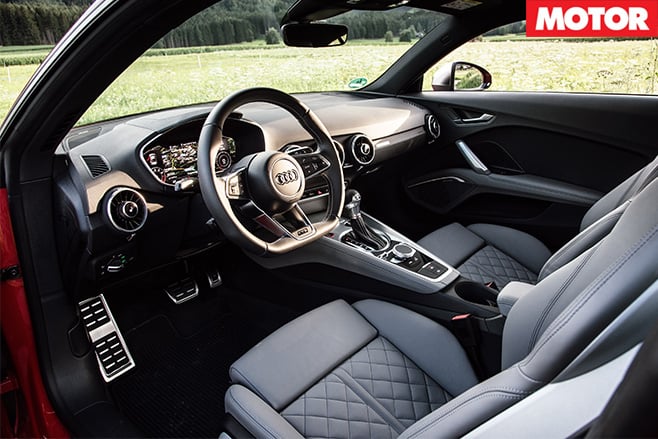
Like the recent S3, standard Drive Select is accessible via a button below the AC vents. Key vehicle traits are dialled in according to five different programs: comfort, auto, dynamic, efficiency and individual. We can’t help but think that an instant access button, like a Ferrari-style manettino switch, would be more appropriate.
After acquainting ourselves with the TTS’s interior, we’re back in the Monza and discovering that, though these two share a family tree, the polyester-bodied Monza and aluminium-bodied TTS are wildly different machines.

Its chassis consists of high-mounted front and rear transverse leaf springs, which are unusually supported by wishbones at one end of the car and by trailing arms at the other. Four drum brakes hide behind 15-inch steel wheels and flashy chrome hubcaps.
Under its bonnet, a tiny 980cc three-cylinder two-stroke unit buried deep down in the vast and nearly empty engine bay musters up a mere 33kW.
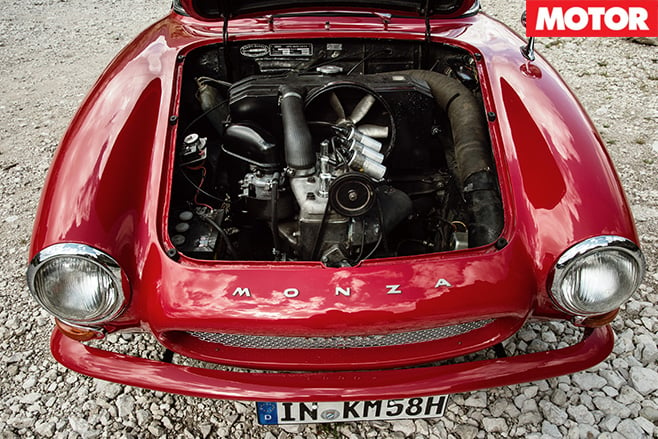
On this particular Friday, high up in the Italian Alps, our drive has hit problems. The Monza’s acting up. Pulling the choke and twisting the key, usually a fail-safe routine, produces only a string of misfiring. As it transpires, the engine will only start when the car is absolutely level, which is a bit of a problem in this mountainous region of the world.

Things are better at the helm. Sure, the randomly sprouting pedals are trickier than expected but the unassisted steering is relatively light, gearing spot-on, and there’s no slack around straight-ahead.
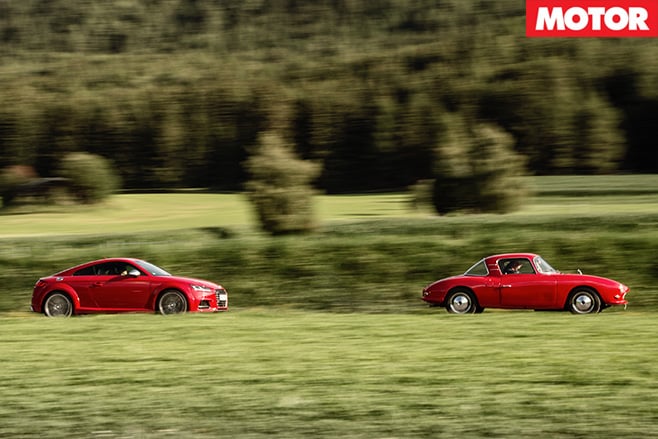
It was this ratio which permitted the Monza’s original claim to fame – its 1956 record-breaking 72-hour endurance run when a pre-production version averaged 142km/h at Monza.
Jumping from the Monza to the TTS and there’s an intergalactic difference, which is highlighted when attacking the Dolomite’s corners.
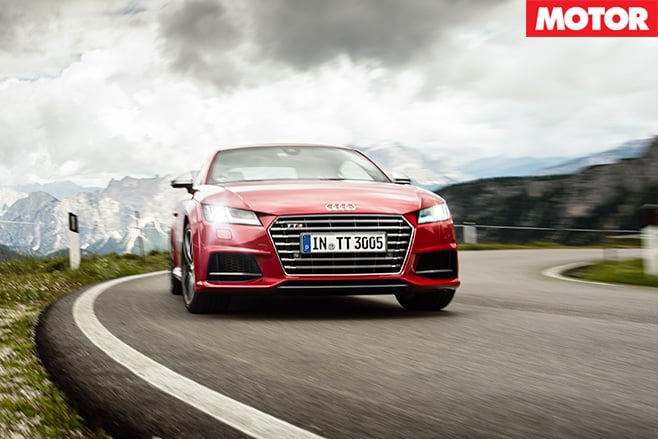
It sounds fast, too, with the new TTS’s sound actuators expertly manipulating intake and exhaust noise, especially locked in Dynamic – a mode which hurries gearshifts, tenses the magnetically adjustable dampers and relaxes the stability systems.
It also taps in to the drivetrain’s distribution of torque, asking the electronically-controlled Haldex clutch to send it to the rear wheels in direct response to initial turn-in, helping push the car into a bend.
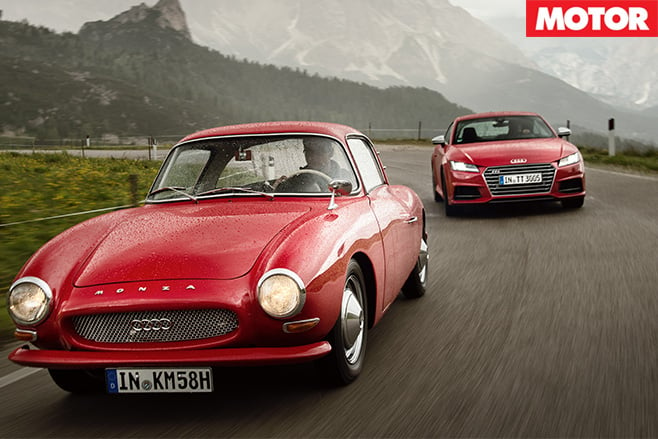
But there’s no need for this car to adopt a cornering attitude it wasn’t designed for, it can field plenty of other strengths. For instance, an undisputed traction advantage through slow kinks, perfectly manageable lift-off to assist turn-in and stoic directional stability even on broken surfaces.

The DKW coupe is, in essence, a capricious near-classic which severely lacks grunt but oozes charm. In sharp contrast, the latest TTS is sure-footed and viceless. It’s fast, has a five-star cabin and does many things right, but loses out in the emotion stakes.

| u00a0 | u00a0 | Audi TTS | u00a0 | DKW Monza Coupe |
| Engine | u00a0 | 1984cc inline-4, DOHC, 16v, turbo | u00a0 | 980cc inline-3, two-strokeu00a0 |
| Power | u00a0 | 228kW @ 5700-6500rpm | u00a0 | 33kW @ 4250rpm |
| Torqueu00a0 | u00a0 | 380Nm @ 1800-5700rpm | u00a0 | 76Nm @ 2800rpm |
| Weightu00a0 | u00a0 | 1345kg | u00a0 | 810kg |
| 0-100km/h | u00a0 | 4.7sec (claimed) | u00a0 | How long have you got? |
| Top Speedu00a0 | u00a0 | 250km/h (claimed) | u00a0 | Depends on the gradient |
| Price | u00a0 | $100,000 (estimated) | u00a0 | $70,000 (approx) |
Rating | u00a0 | 3.5 out of 5 stars | u00a0 | 2.5 out of 5 stars |

